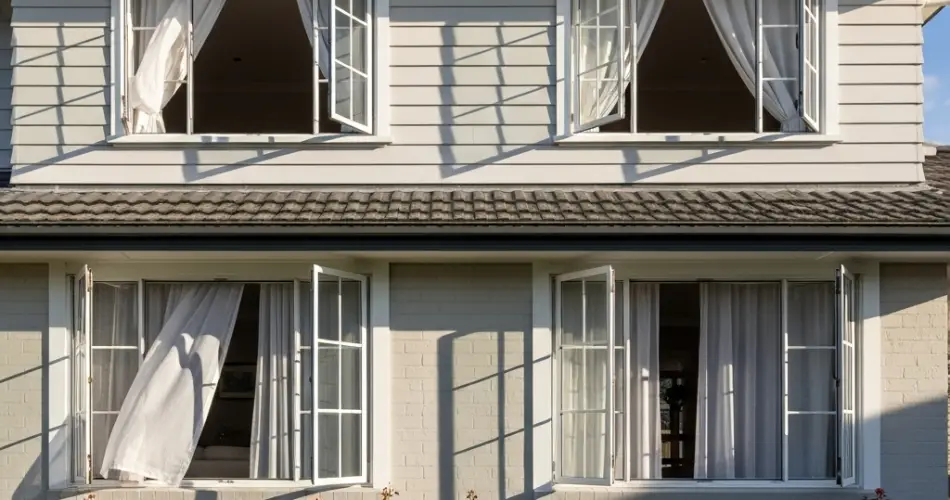Summer heat can make homes uncomfortable, and running an air conditioner all day is not only costly but also energy-intensive. Fortunately, there are alternative methods to keep your living space cool without relying on modern appliances. One surprisingly effective approach comes from ancient history—the Roman method. By learning from the ingenious techniques used by the Romans, you can enjoy a cooler home, save money, and reduce your environmental footprint.
How the Romans Beat the Heat
Ancient Rome was famous for its architecture, and part of their genius lay in designing buildings to remain comfortable in extreme temperatures. Long before electricity-powered air conditioning existed, the Romans developed methods that took advantage of natural airflow, thermal mass, and water to maintain a cooler indoor climate.
Key strategies included:
-
Thick Walls and Insulation
Roman houses often had thick stone or brick walls. These materials absorb heat slowly during the day and release it gradually at night. This natural thermal regulation keeps indoor spaces cooler even under direct sunlight. -
High Ceilings and Ventilation
Many Roman homes featured high ceilings and strategically placed windows. High ceilings allow hot air to rise, keeping living areas cooler. Windows and vents were positioned to maximize cross-ventilation, encouraging fresh air to flow through the rooms. -
Shaded Courtyards and Gardens
Roman homes frequently incorporated central courtyards, shaded with trees and pergolas. Vegetation absorbs heat and provides natural cooling, while shaded areas reduce direct sunlight entering the home. -
Water Features
Fountains, pools, and even water channels were common in Roman homes. Evaporation from water sources cools the surrounding air, lowering temperatures inside the house. This principle works much like modern evaporative cooling systems.
Applying the Roman Method Today
Modern homeowners can adapt these ancient techniques to achieve a comfortable indoor climate without air conditioning. Here are practical ways to implement the Roman method in your home:
-
Use Thick, Insulating Materials
If you’re building or renovating, consider materials with high thermal mass, such as brick, stone, or concrete. These materials naturally regulate temperature by absorbing heat during the day and releasing it at night. Even temporary measures like insulating curtains or thermal window films can mimic this effect. -
Maximize Cross-Ventilation
Open windows on opposite sides of a room or home to create a natural airflow. Positioning fans near windows can help draw in cooler air while pushing out hot air, mimicking the effect of Roman ventilation systems. -
Create Shaded Outdoor Spaces
Plant trees or install pergolas, awnings, or shade sails to reduce direct sunlight on your walls and windows. Shade is one of the simplest and most effective ways to lower indoor temperatures. Even potted plants near windows can help reduce heat gain. -
Incorporate Water Elements
Small indoor fountains, water bowls, or evaporative cooling trays can help reduce temperature by adding moisture to the air. For outdoor cooling, placing water containers near windows or ventilated areas can improve airflow and lower indoor temperatures. -
Optimize Window Placement and Coverings
During hot days, keep curtains or blinds closed on sun-facing windows. In cooler parts of the day, open windows to allow fresh air to circulate. Reflective window films or light-colored curtains can further reduce heat absorption. -
Ceiling Fans and Heat-Rising Principles
High ceilings naturally allow hot air to rise. Ceiling fans can complement this by pushing warm air upward and circulating cooler air downwards. Even portable fans can enhance natural airflow if strategically placed.
Additional Tips for a Cooler Home
-
Night Cooling: Open windows at night to allow cooler air in and close them during the day to trap the cool air inside.
-
Roof Treatments: Lighter-colored or reflective roofing materials can reduce heat absorption.
-
Minimize Heat-Generating Activities: Avoid using ovens, stoves, or large electronics during peak heat hours.
-
Natural Fabrics: Use cotton or linen for curtains, upholstery, and bedding, as they stay cooler than synthetic materials.
Why This Method Works
The Roman method is based on natural principles of heat transfer, airflow, and evaporation. By combining shade, ventilation, thermal mass, and water cooling, you can significantly lower indoor temperatures without consuming electricity. Unlike air conditioning, this approach is sustainable, cost-effective, and environmentally friendly.
Many homeowners have successfully implemented these techniques, reporting indoor temperature reductions of several degrees even on hot summer days. With careful planning and a few adjustments, your home can stay comfortable naturally.
Conclusion
Air conditioning isn’t the only solution for keeping your home cool. The ancient Roman method offers timeless strategies that are surprisingly effective in modern homes. By using thick materials, optimizing ventilation, incorporating shade and water features, and strategically managing airflow, you can enjoy a cooler living environment while saving money and protecting the planet.
Next time the summer heat rises, think like a Roman: design your space to work with nature, not against it, and you’ll be amazed at how comfortable your home can be—even without air conditioning.



